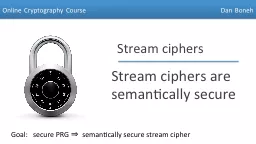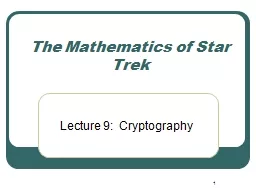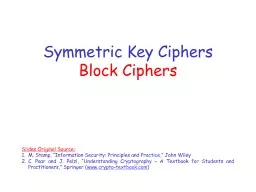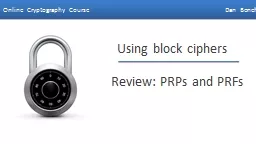PPT-Using block ciphers Review: PRPs and PRFs
Author : tatiana-dople | Published Date : 2018-10-25
Online Cryptography Course Dan Boneh Block ciphers crypto work horse E D CT Block n bits PT Block n bits Key k bits Canonical examples 3DES n 64 bits k 168 bits
Presentation Embed Code
Download Presentation
Download Presentation The PPT/PDF document "Using block ciphers Review: PRPs and PRF..." is the property of its rightful owner. Permission is granted to download and print the materials on this website for personal, non-commercial use only, and to display it on your personal computer provided you do not modify the materials and that you retain all copyright notices contained in the materials. By downloading content from our website, you accept the terms of this agreement.
Using block ciphers Review: PRPs and PRFs: Transcript
Download Rules Of Document
"Using block ciphers Review: PRPs and PRFs"The content belongs to its owner. You may download and print it for personal use, without modification, and keep all copyright notices. By downloading, you agree to these terms.
Related Documents














